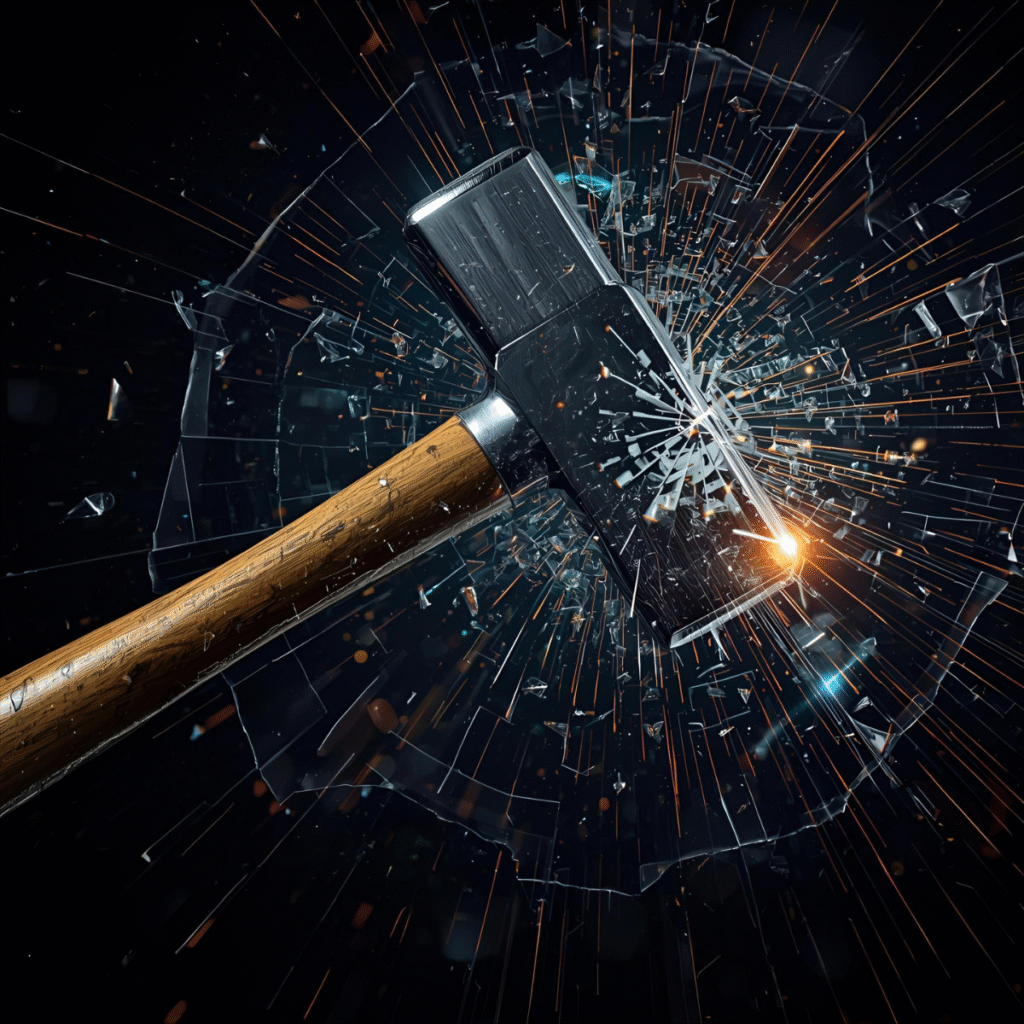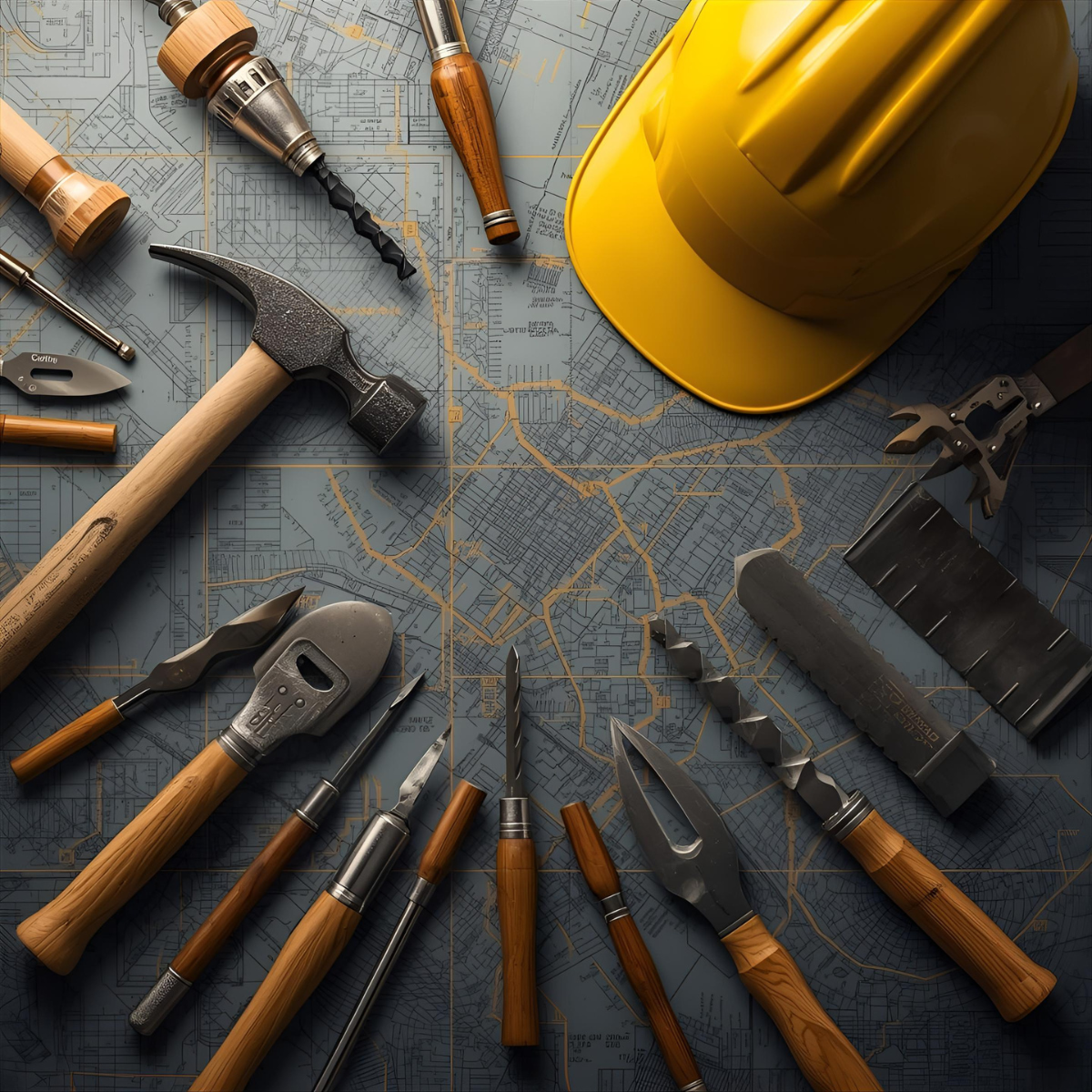Construction is the backbone of modern development. From small homes to large infrastructure projects, no structure can be built without the right set of tools and equipment. While materials like cement, steel, and bricks form the body of a building, it is the tools that bring them together into a functional structure.
For anyone entering the construction field, whether as a homeowner, student, or budding engineer, it’s important to understand the top 10 construction tools that are widely used across projects. These tools make work faster, safer, and more precise, ensuring that the end result is strong and durable.
In this guide, we will walk through the most important construction tools and equipment you should know about, explained in simple terms for easy understanding.
Measuring Tape
Every successful construction project starts with accurate measurements. A measuring tape may look simple, but it is one of the most essential tools. Builders use it to measure lengths, widths, and depths of materials, walls, and spaces. Without proper measurements, nothing fits correctly, and even the best materials go to waste. This is why measuring tape holds the first spot in the top 10 construction tools list.
Spirit Level
Also called a bubble level, this tool helps check whether a surface is perfectly horizontal (level) or vertical (plumb). Even a slight tilt in walls or flooring can cause long-term structural issues. The spirit level ensures balance and precision, making it an indispensable tool in masonry and carpentry.
Hammer
A hammer may sound basic, but it has endless uses in construction. From driving nails to breaking small concrete pieces, it’s one of the most frequently used tools. Different types of hammers—claw hammers, sledgehammers, and club hammers—serve different purposes, but all remain vital in day-to-day site work.
Trowel
For masonry and plastering work, trowels are a must. They are flat, handheld tools used for applying and spreading mortar or cement. Trowels help masons create smooth finishes on walls and floors. Without this tool, construction would lack the finesse that makes walls neat and strong.
Wheelbarrow
Transporting heavy loads like sand, cement bags, or gravel becomes easier with a wheelbarrow. This single-wheel cart reduces manual effort and saves time, especially in larger projects. By allowing one person to move materials quickly, wheelbarrows are among the most practical items in the top 10 construction tools.
Concrete Mixer
Concrete is the lifeblood of construction, and mixing it properly is critical. A concrete mixer ensures cement, sand, gravel, and water blend evenly to create strong concrete. Manual mixing is time-consuming and uneven, while a mixer produces high-quality concrete efficiently, making it a must-have for modern construction.

7. Power Drill
In today’s construction sites, a power drill is essential for creating holes in walls, metal, or wood. It saves time compared to manual drilling and ensures precision. With different drill bits, workers can handle multiple tasks—from fixing screws to making deep holes—making the power drill one of the most versatile items in the top 10 construction tools list.
8. Safety Gear
No construction site is complete without safety equipment. Helmets, gloves, boots, goggles, and harnesses protect workers from accidents and injuries. While safety gear may not directly build structures, it ensures the people who build them remain protected. This is why safety equipment is as important as any tool in the construction process.
9. Ladders and Scaffolding
Construction often requires working at heights, whether for painting, roofing, or laying bricks. Ladders and scaffolding provide safe access to elevated areas. Scaffolding, in particular, creates stable platforms for workers and materials, making it crucial for large-scale projects.
10. Excavator
When the project scale is big, manual tools are not enough. Excavators are heavy machines used for digging foundations, moving soil, and handling large materials. They save time and manpower while ensuring precise earthwork. Because of their impact, excavators proudly hold a place in the top 10 construction tools you must know.
Why Knowing These Tools Matters
Understanding the top 10 construction tools is not just for professionals—it helps homeowners, students, and even DIY enthusiasts appreciate the process of building. These tools and equipment are the silent partners behind every strong wall, level floor, and safe structure.
By learning about them, you not only gain knowledge but also develop respect for the effort and precision that go into construction projects. For future engineers, architects, or site managers, familiarity with these tools is the foundation of practical learning.
Conclusion
Construction is more than stacking bricks or pouring concrete. It is a careful combination of materials, skill, and tools. The top 10 construction tools listed above—ranging from simple items like measuring tapes and hammers to advanced machines like excavators—make it possible to transform raw materials into lasting structures.
Without these tools, construction would be slow, unsafe, and imprecise. With them, buildings rise stronger, faster, and more efficiently. Whether you are planning a project, studying construction, or simply curious, understanding these tools gives you a deeper appreciation for the art and science of building.
FAQs on Top 10 Construction Tools
Why are construction tools important in building projects?
Construction tools are important because they make work faster, safer, and more precise. Without the right tools, tasks like measuring, mixing, or finishing would take longer and may lead to poor-quality results.
What are the top 10 construction tools used most commonly?
The top 10 construction tools include measuring tape, spirit level, hammer, trowel, wheelbarrow, concrete mixer, power drill, safety gear, ladders & scaffolding, and excavators. These tools cover almost every stage of construction.
What is the difference between hand tools and equipment in construction?
Hand tools like hammers, trowels, and measuring tapes are operated manually, while equipment like concrete mixers and excavators use mechanical or electrical power for heavy-duty tasks. Both are essential for efficient construction.
How does safety gear count as a construction tool?
Safety gear is considered part of construction tools because it protects workers from accidents and injuries on site. Helmets, gloves, boots, and goggles are as important as hammers or drills since they ensure safe working conditions.
Can modern construction work be done without machines like excavators or concrete mixers?
Small-scale projects may still rely on manual tools, but for medium to large-scale construction, machines like concrete mixers and excavators are necessary. They save time, reduce labor costs, and deliver consistent quality.
